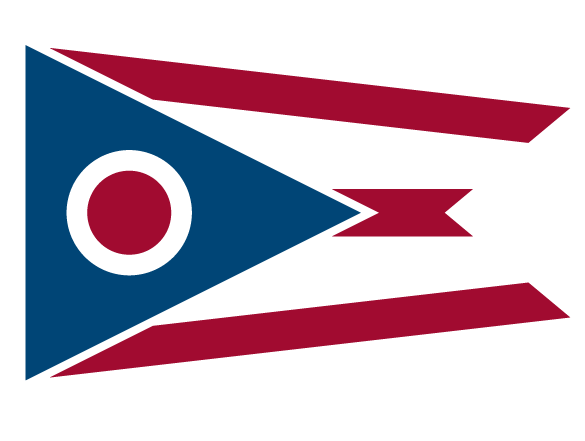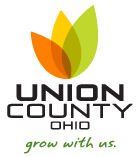 The Union County Engineer is the floodplain manager for the unincorporated areas of Union County and is responsible for the administration and enforcement of Union County's Flood Damage Reduction Regulations. The regulations were adopted by the Union County Commissioners as required by the Federal Government. Flood Insurance Rate Maps (FIRM) as published by the Federal Emergency Management Agency (FEMA) serve as the basis for the regulations. Flood Hazard Permits are issued for any new construction or filling or storage of materials within these flood hazard areas.
The Union County Engineer is the floodplain manager for the unincorporated areas of Union County and is responsible for the administration and enforcement of Union County's Flood Damage Reduction Regulations. The regulations were adopted by the Union County Commissioners as required by the Federal Government. Flood Insurance Rate Maps (FIRM) as published by the Federal Emergency Management Agency (FEMA) serve as the basis for the regulations. Flood Hazard Permits are issued for any new construction or filling or storage of materials within these flood hazard areas.
Union County Regulations and Forms
Flood Hazard Permit Form
Flood Damage Reduction Regulations
Floodplain Regulation Resources
FEMA: The National Flood Insurance Program
FEMA: Flood Map Service Center (Official Flood Maps)
ODNR: Floodplain Management
 Five Facts on Flooding and the National Flood Insurance Program
Five Facts on Flooding and the National Flood Insurance Program
- Flooding is Ohio’s #1 natural disaster. Historically we have had a major flooding event 1 in 7 years.
- If your house is in a flood hazard area you have a 26% probability of being flooded during the life of a 30-year mortgage. This compares to 1-2% probability of having a fire.
- 25% of flood damage occurs where the maps do not show that a flood hazard area exists.
- The federal government provides flood insurance because private insurance companies cannot afford to do so or would have to charge exorbitant premiums to cover the probability for losses.
- Anyone can purchase flood insurance even if you are not in a flood hazard area. The homeowner’s insurance that most people carry does not cover flood losses.
Frequently Asked Questions
 How can I tell if my property is located within a flood hazard area?
How can I tell if my property is located within a flood hazard area?
 I am refinancing my home and the bank is requiring flood insurance but my property has never flooded. Is there anything that I can do?
I am refinancing my home and the bank is requiring flood insurance but my property has never flooded. Is there anything that I can do?
 Can I fill a low area on my property if it is in a flood hazard area?
Can I fill a low area on my property if it is in a flood hazard area?
 What are some factors to consider when building a new house or an addition to an existing house located in a flood hazard area?
What are some factors to consider when building a new house or an addition to an existing house located in a flood hazard area?
There are 3 ways you can check to see if your property is within a FEMA designated flood hazard area:
- Use FEMA’s Flood Map Service Center to create a “Firmette”, an overlay of your property with the flood map information.
- Go to Union County’s MAPS GIS, enter a property address, turn on the aerial photography and floodplain layers.
- Check the Flood Insurance Rate Maps available at the Union County Engineer’s office.
First check to see if your property is in the flood hazard area. If the Flood Insurance Rate Map (FIRM) shows it in the flood hazard area but you believe the map is incorrect, you can hire a surveyor/engineer to see if an actual elevation survey of your house and surrounding topography is different from the FIRM. If there is justification that the map is incorrect, then you can have the engineer/surveyor apply for a Letter of Map Amendment (LOMA) to FEMA for them to evaluate whether the map can be changed to show your house above the flood hazard. The LOMA if approved can be shown to the bank. The bank ultimately has the authority on whether or not they want to void the requirement for flood insurance.
No fill is permitted in the floodway. No fill is permitted within 120 feet from the low water in Zone A. A flood hazard permit is required to fill in a flood hazard area and a plan showing the extent of fill, grading and plans for seeding and mulching the disturbed area. Be advised that filling in a low area can have adverse impacts on adjoining property’s drainage. We recommend property owners have the re-grading plan designed by someone with knowledge of drainage and surface water runoff. Other permits may be required by OEPA, ODNR and Army Corps of Engineers depending on the amount of fill, whether it is a protected wetland and if it is tributary to Big Darby Creek, a state and national scenic waterway.
New structures and substantially improved existing structures located in a flood hazard area need to be elevated above the 100-year base flood elevation. In an approximate zone A, the elevation of the first floor including basement or crawlspace floor needs to be 2 feet higher than the highest adjacent grade. In an area where base flood elevation exists, called a zone AE, the elevation of the first floor including basement or crawlspace floor needs to be 1 foot higher than the base flood elevation (BFE). All utilities, including gas meters, electric meters, HVAC equipment, well casing openings and septic systems have to be elevated or located outside of the flood hazard area. The driveway also has to be elevated such that it can be usable during a 100-year flood event. A flood hazard permit is required along with a site plan that shows the building, utility and driveway location and elevation information. An Ohio licensed surveyor will need to establish the BFE for zone AE sites. For zone A sites, Union County GIS information can be used. An Ohio licensed surveyor will need to complete a FEMA elevation certificate and submit a copy to the Union County Engineer’s office. Be advised that federal flood insurance will still likely be required by your bank even if the structure is elevated properly to meet these standards.
 An official State of Ohio government website.
Here's how you know
An official State of Ohio government website.
Here's how you know

